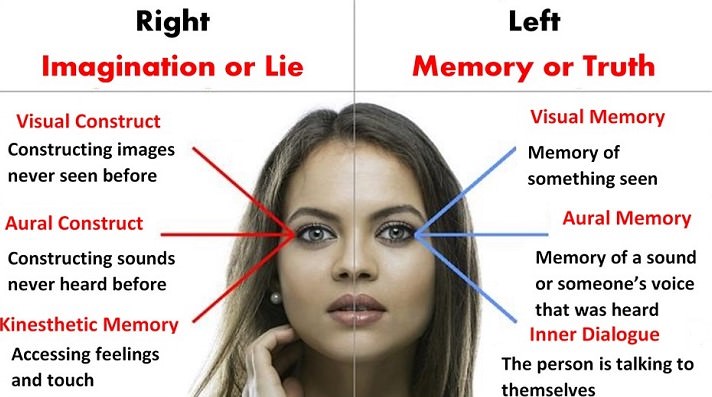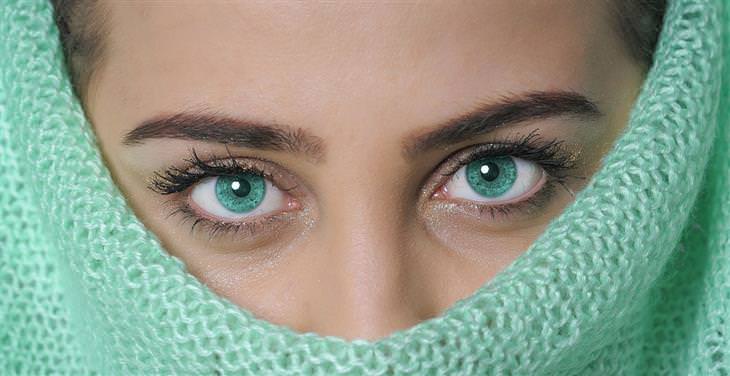
Many claim that the eyes are the window to our soul and if they really reveal so much about us, can it be that they are actually a kind of lie detector? It may sound like an unfounded statement, however, it’s commonly thought that the left side of the brain is linked to thought processes and logic, while the right side is creative. Therefore, when we look with our eyes to the left, we use the left side of the brain, so we use our logic, but when we look with our eyes to the right, we use creativity.
These processes can be given different names that relate to what we say, in which case logic is equal to truth while creativity is equal to a lie. This division is only basic, and you can know more about the lie or the truth according to the direction someone looks. To learn more about the secrets that your eyes are hiding you need to delve a little deeper…

According to the theory of NLP, founded by Professor John Grinder, eye movement can be mapped to understand what thoughts are going through the person's head as they speak, even before they open their mouth. When we think, our eyes move according to the region of the brain that is responsible for the information we are looking for. In this sense our brain is divided into 4 parts:
Now it’s time to learn how to analyze the mental processes that occur in a person's mind as they speak and try to recall memory, according to the movement of their eyes. Note that the left and right movements are relative to the point of view of the person you are talking to, and not from your point of view.

When a person tries to remember what they wore at a certain event or the first car they ever bought, their eyes will move to the left and up.
When one imagines horses flying in the sky or pink spotted cows, they activate a mechanism in the brain responsible for inventing something they have never seen. Their eyes will move right and up when imagining things.
When a person remembers their favorite song or their mother's voice, they try to reconstruct an aural memory, which is expressed by looking left.
When a person is asked to think of the lowest sound they can imagine or guess how an elephant wouldn’t sound if it were ten times smaller, they need to construct a sound they’ve never heard before. When doing so their eyes will look to the right.
When one ponders something and has an internal dialogue with oneself they look left and down.
When a person is asked to touch their nose or remember the smell of the first rain, for example, their eyes will often tilt left and down as evidence of an attempt to activate the memory of the muscles and sensory system of the body.
